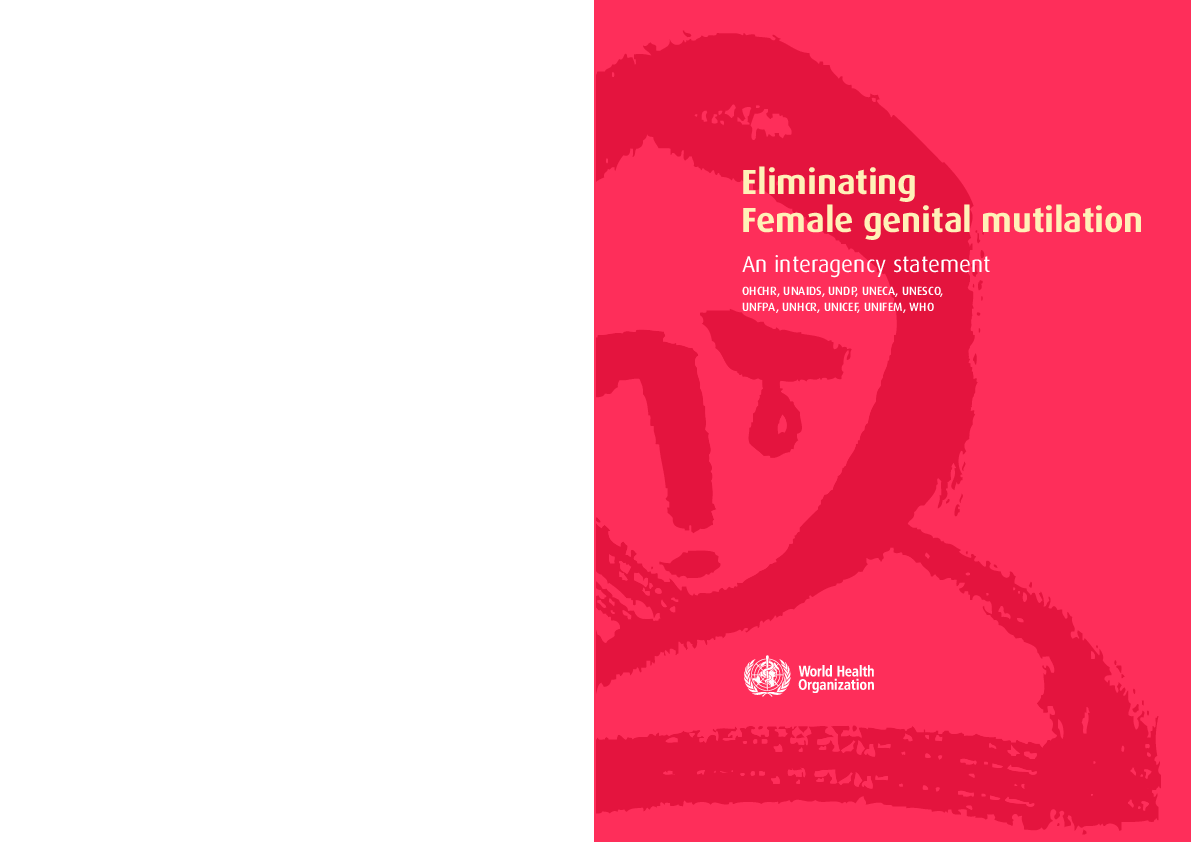The term ‘female genital mutilation’ (also called ‘female genital cutting’ and ‘female genital mutilation/cutting’) refers to all procedures involving partial or total removal of the external female genitalia or other injury to the female genital organs for non-medical reasons. Between 100 and 140 million girls and women in the world are estimated to have undergone such procedures, and 3 million girls are estimated to be at risk of undergoing the procedures every year. Female genital mutilation has been reported to occur in all parts of the world, but it is most prevalent in: the western, eastern, and north-eastern regions of Africa, some countries in Asia and the Middle East and among certain immigrant communities in North America and Europe.
Female genital mutilation has no known health benefits. On the contrary, it is known to be harmful to girls and women in many ways. First and foremost, it is painful and traumatic. The removal of or damage to healthy, normal genital tissue interferes with the natural functioning of the body and causes several immediate and long-term health consequences. For example, babies born to women who have undergone female genital mutilation suffer a higher rate of neonatal death compared with babies born to women who have not undergone the procedure

